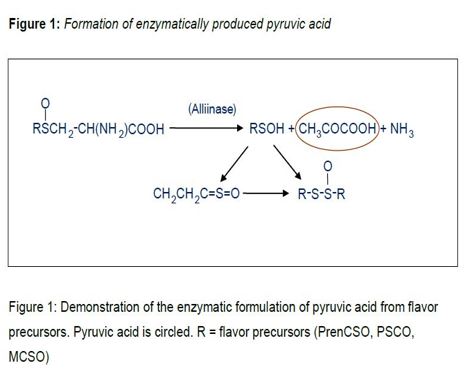The uptake of sulfate by the onion, its reduction to sulfide, and subsequent assimilation into cysteine through light-dependent processes in the plant's leaves are the first steps in flavor precursor production. Glutathione, a cysteine tripeptide, is then produced. This is where the taste precursor biosynthesis pathway begins. The genetics of the cultivar determines a substantial part of the concentration of flavor precursors in onions. Onions vary in pungency due to differing levels of taste precursors accumulating in various varieties. Onion's genetic system regulates sulfur intake as well as sulfur assimilation into taste precursors. The genetic regulation of onion flavor is unknown, but it is most likely complicated, considering the several processes and transformations sulfur undergoes before becoming a component of the flavor precursors. Each of these stages is regulated by an enzyme produced by the plant's genetic system.
When onion tissues are mechanically injured, they create different volatile sulfur compounds. The taste precursor molecules, trans S-1-propenyl-L-cysteine-sulfoxides isoallinin, are degraded by alliinase to create thiopropanal S-oxide (tear-causing factor), pyruvic acid, and ammonia. Through a series of complex chemical processes, thiopropanal S-oxide degrades producing mono-, di-, or tri-sulfides.
Conversely, a pungent cultivar can be made milder if grown under conditions which favor minimum flavor production. Sulfate availability, growth temperature, and water availability are all factors that influence flavor intensity. The more sulfate available for uptake, the more pungent or flavorful a cultivar will be. Pungency increases with greater growing temperatures and drier growing conditions. Conversely, low sulfate availability, low growing temperatures, and moist growing conditions will lower onion flavor intensity. A common assessment of pungency is made by measuring pyruvate, which is formed as a stable primary compound from the enzymatic decomposition of each of the flavor precursors. Pyruvate is produced in a mole for mole relationship with the flavor precursors.
Md. Ataur Rahman
Scientist
ASRBC




